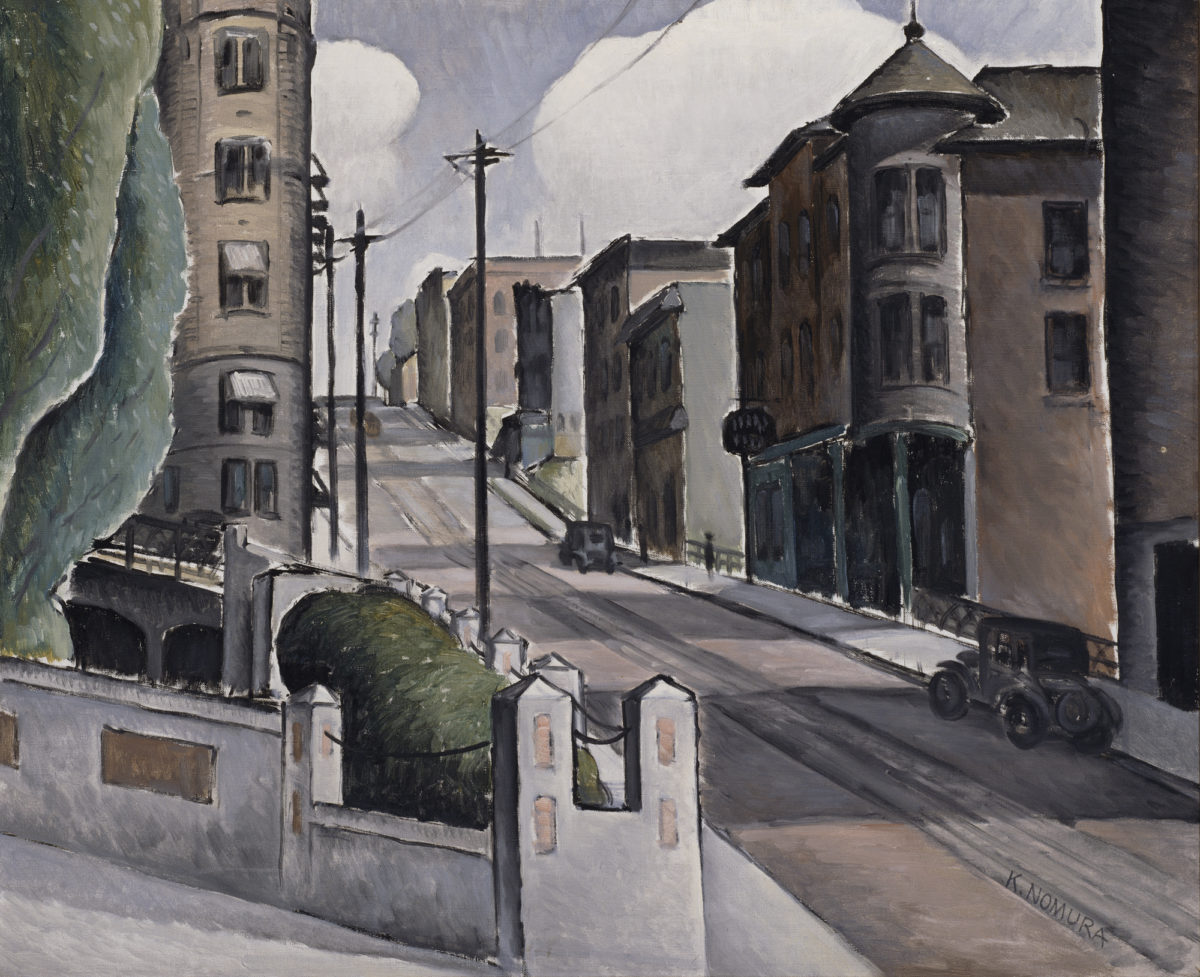Object of the Week: Street

Located in the far northwest corner of the contiguous United States, Seattle is oriented more to the Pacific than to Europe, and many of its artists looked to Asia in shaping the region’s singular form of modernism. Some practiced sumi-e (ink painting) and calligraphy as pathways to abstraction; others discovered in Zen a model of self-knowledge and unmitigated expression; still others traveled to Japan and China and made contact with those cultures directly. Artists of Asian descent experienced, on balance, an inclusive artistic environment, despite facing discrimination within the larger community, most tragically during World War II.
Alongside Kamekichi Tokita, Paul Horiuchi, and Geoge Tsutakawa, Kenjiro Nomura was one of Seattle’s leading Japanese American artists. Together, their stories reflect the historical diversity of the Pacific Northwest and its artists, adding further depth to 20th-century American art. As Issei (first-generation Japanese American), Nomura was raised in a traditional Japanese family and educated in the arts and culture of his parentage. He immigrated with his family to the United States in 1907, at the age of eleven. When he was sixteen, his parents returned home, but he stayed on and settled in Seattle to build a successful business and career as an artist.
A self-described “Sunday painter” with little formal training, he specialized in the realist style and vernacular subject matter associated with 1930s American Scene painting. Street, with its formal clarity and unmistakable awareness of place, is typical of his regionalism. Yet, even as he mastered this decidedly Western approach, he also maintained expertise in traditional Japanese painting, whose conventions of color, composition, and line inspired him to approach nature intuitively and on his terms.
Street immortalizes the busy intersection of Fourth Avenue and Yesler Way, the epicenter of Seattle’s thriving Japanese American community during the 1920s and 1930s. Here, Nomura launched Noto Sign Co., a signage manufacturer and popular gathering place for artists, and the headquarters from which he and his business partner, Tokita, established themselves on the local exhibition circuit.
In 1933, Nomura exhibited Street at the Seattle Art Museum’s Annual Exhibition of Northwest Artists and with it secured the prestigious Katherine B. Baker Award and a place in the permanent collection of the newly formed museum. When SAM officially opened its doors that same year, it was with a solo exhibition of Nomura’s work. His success, however, was cut short with the Great Depression and resulting forced closure of Noto Sign Co. During World War II, anti-Japanese sentiment and hostility led to his forced internment at the Minidoka Relocation Center in Idaho. When he returned to Seattle three years later, it was to continued discrimination and limited opportunities for Japanese Americans. Yet, Nomura continued to paint and participate in Seattle’s mid-20th-century cultural scene, sharing common cause with his fellow Northwest Modernists.
Nomura’s work is on view at SAM in the exhibition Northwest Modernism: Four Japanese Americans, and at the Cascadia Art Museum in the major retrospective, Kenjiro Nomura, American Modernist: An Issei Artist’s Journey.
– Theresa Papanikolas, Ann M. Barwick Curator of American Art
Image: Street, ca. 1932, Kenjiro Nomura, Oil on canvas, 23 3/4 x 28 3/4 in., Gift of West Seattle Art Club, Katherine B. Baker Memorial Purchase Award, 33.225.